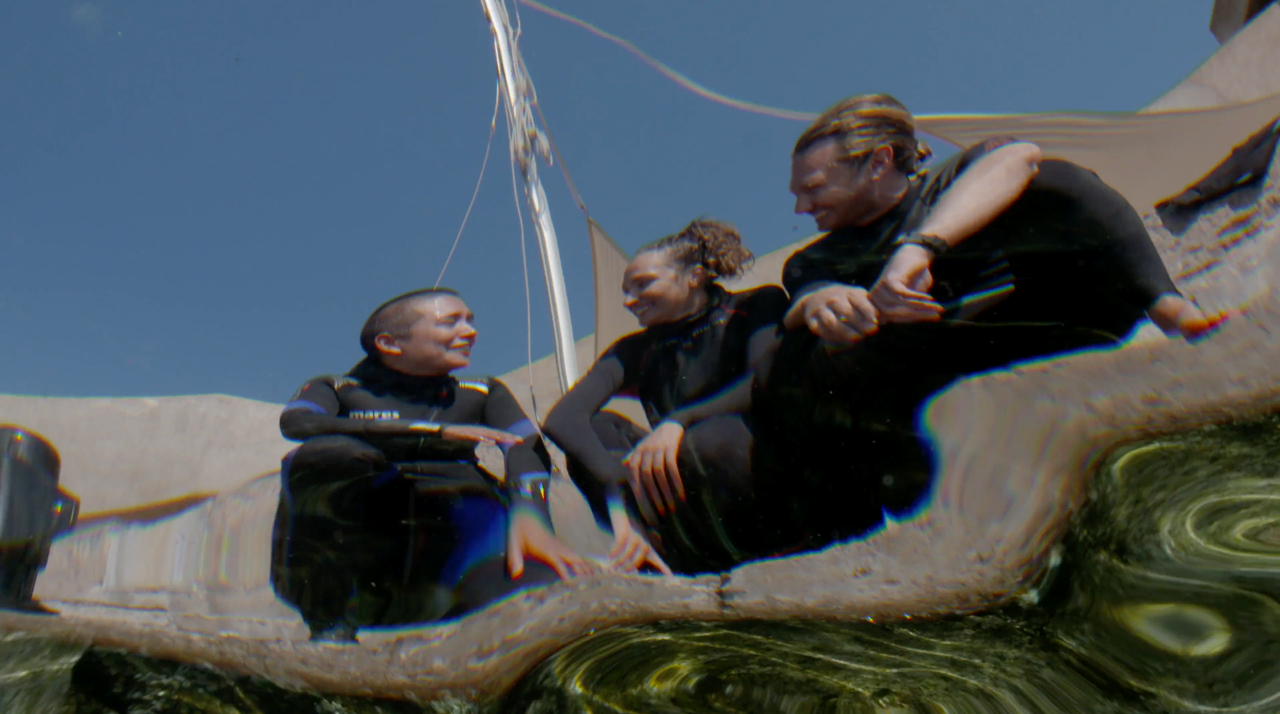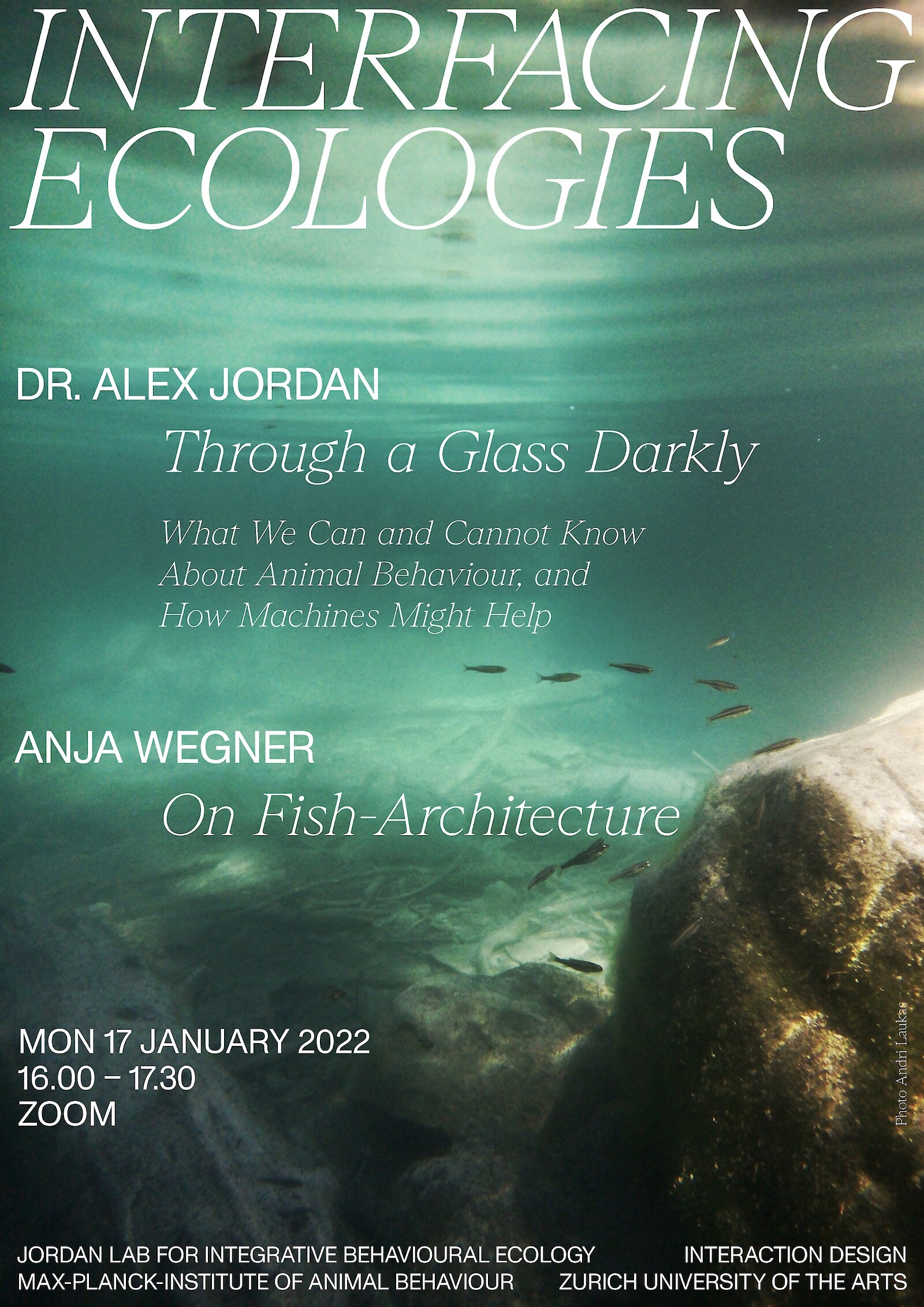Interfacing Ecologies Lecture Series || Jordan Lab & WSL || 17 & 18 January 2022
Jordan Lab for Integrative Behavioural Ecology
Max-Planck-Institute of Animal Behaviour
Introduction: Karmen Franinović | Moderation: Rasa Weber
— Dr. Alex Jordan, Head of the Jordan Lab
«Through a Glass Darkly – What We Can and Cannot Know About Animal Behaviour, and How Machines Might Help»
— Anja Wegner, Researcher, Jordan Lab
«On Fish-Architecture»
Our research group uses quantitative approaches to study the evolution and adaptive value of animal social behaviour in natural contexts. Using techniques like computer vision and machine learning, automated tracking of behaviour, and 3D reconstruction of environments, we aim for a quantitative assessment of the expression and value of social behaviour in the places it naturally occurs.
Mon 17 January 2022
16.00 – 17.30
Zoom | Password 475250
Swiss Federal Institute for Forest, Snow
and Landscape Research WSL
Introduction: Karmen Franinović | Moderation: Duy Bui
— Dr. Ivano Brunner, Head of Research Unit ‘Forest Soils and Biogeochemistry’
«Understanding Forest Soils»
Brief introduction of the Swiss Federal Institute for Forest, Snow and Landscape Research WSL and our research unit "Forest Soils and Biogeochemistry". Our task is to study and monitor changes and threats to forest soils that occur almost daily due to climate change, drought, storms, landslides, avalanches, nitrogen inputs, soil acidification or pathogens.
You may think forest soils are boring, but they harbour some valuable delicacies, like truffles or porcini mushrooms. Wood is as much a product of the forest soil (furniture) as heat (energy wood) and tap water (water storage). Perhaps the most important service provided by forest soils, however, is the long-term storage of carbon in the form of soil organic matter, known as "humus," and the provision of habitat for thousands of different soil organisms, such as earthworms, springtails, water bears, fungi, slime molds, or bacteria.
— Dr. Beat Frey, Senior Scientist and Head of Rhizosphere Processes Group
«Permafrost and Ice – Unexplored Treasure of Unknown Microbes»
The Alps and the Arctic with its glaciers and permafrost are particularly affected by climate warming. For the first time, we have analysed microbiomes from alpine permafrost and glacier ice with the aim for searching of microbial life. The results were surprising: up to 1000 different microorganisms were found, about many of them are unknown or poorly explored. Are these organisms dormant in the frozen ground or are they active? For thousands of years, these organisms were trapped in the permafrost and ice. What will happen to them when they are awakened from their "slumber" by global warming? Among them some could be interesting for biotechnology. But it is also possible that there are microbes among them that are dangerous to humans. It’s time now to explore this unknown microbial treasure in ice and permafrost.
Tue 18 January 2022
17.00 – 18.30
Zoom | Password 475250


